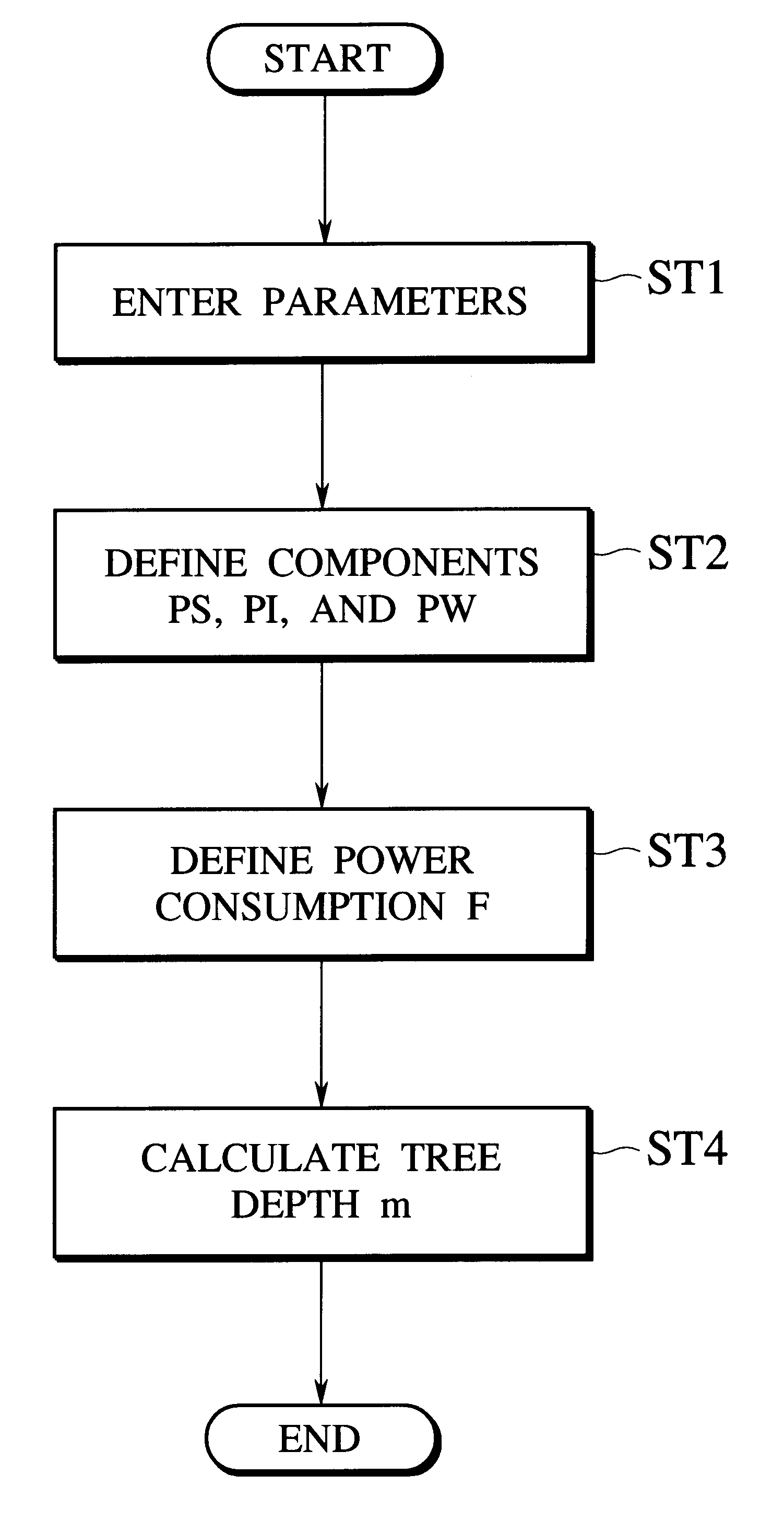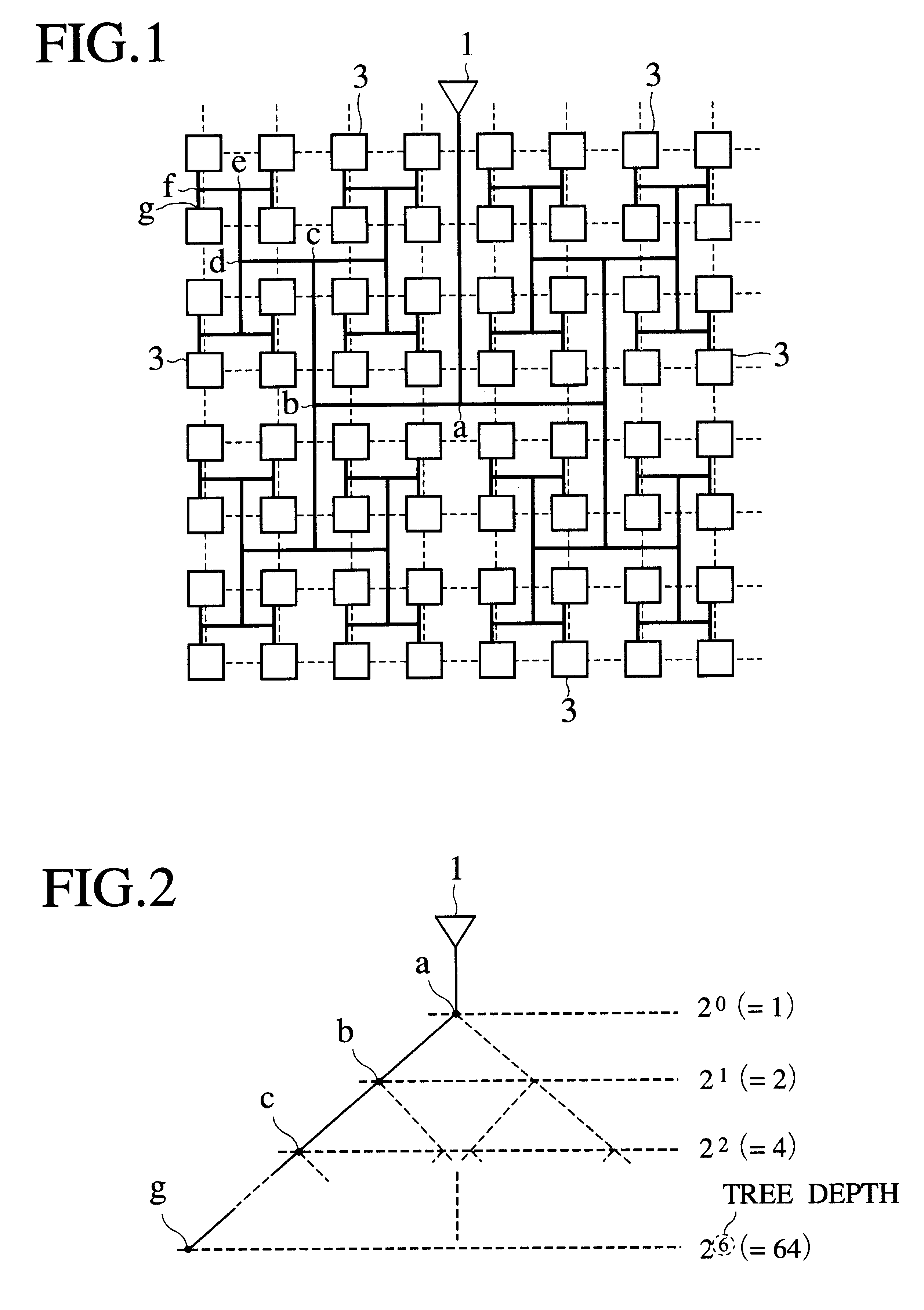Method and apparatus for the optimization of a tree depth for clock distribution in semiconductor integrated circuits
a technology of integrated circuits and tree networks, applied in the field of distribution, can solve the problems of inapplicability of prior art, delay in clock signal receiving by elements, and lack of consideration of power consumption of h-tree networks
- Summary
- Abstract
- Description
- Claims
- Application Information
AI Technical Summary
Benefits of technology
Problems solved by technology
Method used
Image
Examples
Embodiment Construction
Embodiments of the present invention will be explained with reference to the accompanying drawings.
FIG. 1 is a plan view showing an H-tree network for distributing a clock signal to elements of a semiconductor integrated circuit, according to the present invention. This H-tree is called a "completely symmetrized H-tree." The H-tree network is indicated with a thick line and is composed of a repetition of H-shaped wiring. The H-tree network distributes a clock signal from a root driver 1 to all groups 3. Each group 3 contains at least one element, which is a flip-flop in this example. Every wiring segment that connects a pair of the groups 3 has an identical length. Buffer cells are arranged at branching points of the H-tree network. The buffer cells in the last stage of the H-tree network directly distribute the clock signal to the flip-flop groups 3.
Since each H-shaped wiring in the H-tree network is symmetric, the clock signal provides the same delay on every flip-flop group 3.
The...
PUM
 Login to View More
Login to View More Abstract
Description
Claims
Application Information
 Login to View More
Login to View More - R&D
- Intellectual Property
- Life Sciences
- Materials
- Tech Scout
- Unparalleled Data Quality
- Higher Quality Content
- 60% Fewer Hallucinations
Browse by: Latest US Patents, China's latest patents, Technical Efficacy Thesaurus, Application Domain, Technology Topic, Popular Technical Reports.
© 2025 PatSnap. All rights reserved.Legal|Privacy policy|Modern Slavery Act Transparency Statement|Sitemap|About US| Contact US: help@patsnap.com



